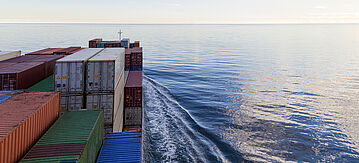The International Maritime Organization (IMO) plans to significantly reduce sulfur oxide emissions from marine fuels. To achieve this, the worldwide maximum sulfur content is to be reduced from 2020 on. The decision was supported and welcomed by a large majority, following a debate in which more than 50 representatives from individual countries, industry and environmental organisations expressed their views. Federal Environment Minister Barbara Hendricks made the following statement: "This decision by the IMO was overdue. In the North and Baltic Seas we already have a much lower limit for sulfur content in heavy fuel oils used on board. The international shipping industry is now better shouldering their responsibility for the environment and human health."
The decision of the 70th session of the IMO's Marine Environment Protection Committee (MEPC) envisages a worldwide cap of 0.5 percent on the maximum sulfur content in marine fuels starting in 2020. This is being done to reduce the effects of shipping on human health and the environment. The session took place from in London 24 to 28 October.
Currently, the maximum sulfur content for heavy fuel oils used on board is at 3.5 percent. If the reduction had been delayed until 2025, there might have been more than 570,000 additional premature deaths compared to the earlier entry into force in 2020 that has now been agreed. The decision is based on a measure under the MARPOL Convention in 2008 that IMO implement a progressive tightening of limits for sulfur. It applies to all types of ships, not only to container ships, as was sometimes reported. Bordering on two sulfur emission control areas (SECAs), Germany already benefits from stricter regulations. In the North and the Baltic Sea SECAs there has been a stricter limit for the sulfur content of marine fuels since the start of 2015: a maximum of 0.10 percent is allowed in these areas. The more demanding limits will also have to be observed in the SECA regions starting in 2020. The current IMO decision was facilitated by the extensive experience of the EU Member States with the sulfur standards in the SECAs and their enforcement. In the coastal regions of the North and Baltic Seas, the sulfur concentration in the air has been cut in half in recent years as a result.

